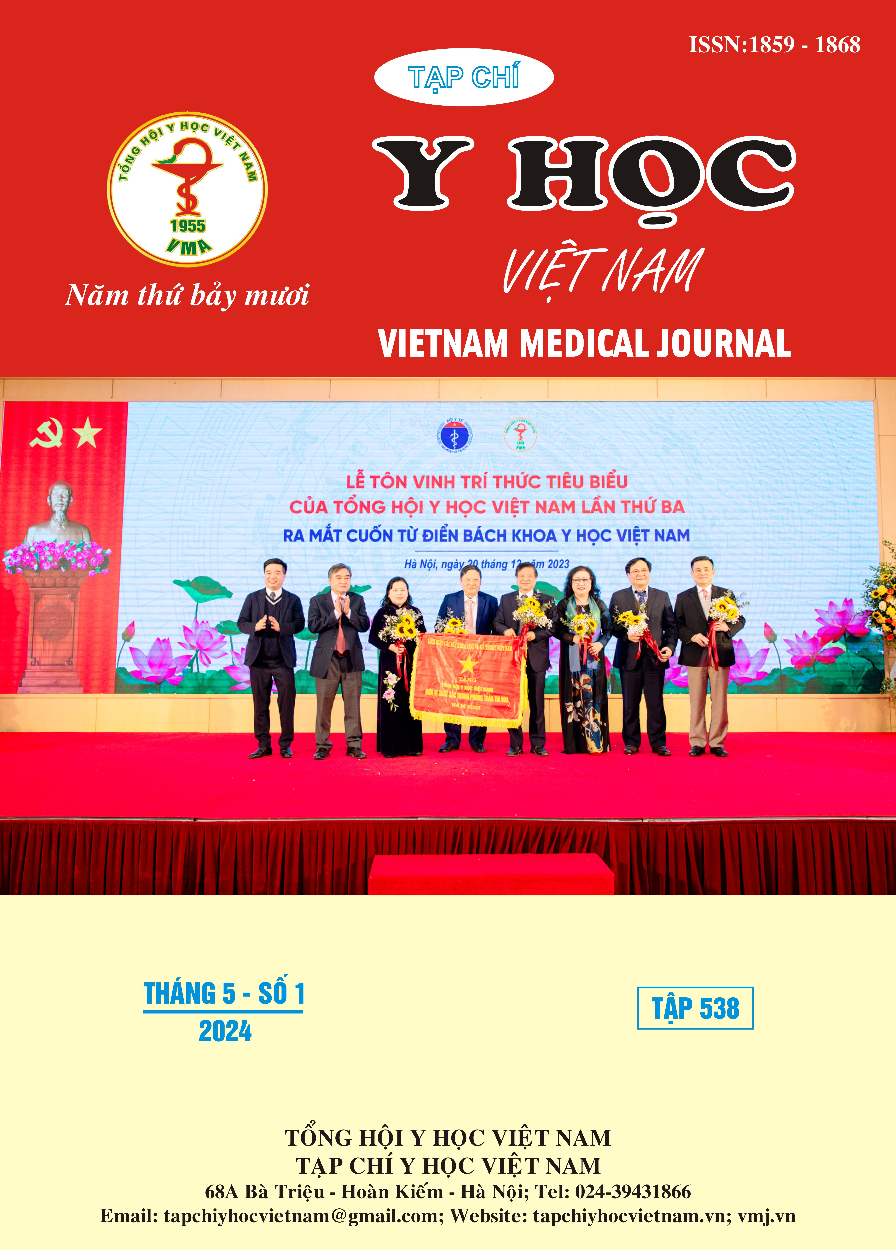ĐẶC ĐIỂM MẬT ĐỘ XƯƠNG Ở BỆNH NHÂN GÚT CÓ BIẾN CHỨNG BỆNH THẬN MẠN TÍNH ĐIỀU TRỊ TẠI BỆNH VIỆN TRUNG ƯƠNG THÁI NGUYÊN
Nội dung chính của bài viết
Tóm tắt
Mục tiêu: Mô tả đặc điểm mật độ xương và một số yếu tố liên quan đến mật độ xương ở bệnh nhân gút có biến chứng bệnh thận mạn tính điều trị tại bệnh viện Trung Ương Thái Nguyên. Đối tượng và phương pháp nghiên cứu: Nghiên cứu mô tả cắt ngang được thực hiện trên 62 bệnh nhân gút có biến chứng bệnh thận mạn điều trị tại bệnh viện Trung Ương Thái Nguyên. Kết quả: Tuổi trung bình 70,89 ±10,37. Giai đoạn bệnh thận mạn: GĐ I chiếm 8,1%, GĐ II: 45,2%, GĐ IIIa: 25,8%, IIIb: 21,0%, ước tính MLCT <60 ml/phút/ 1,73 m2 da chiếm 46,8%. Tỷ lệ mật độ xương bình hường chiếm 16,1%, thiểu xương 38,7%, loãng xương 45,2%. Mật độ xương trung bình tại cột sống thắt lưng -1,99±1,03, mật độ xương trung bình tại cổ xương đùi -1,08±0,91. Có ý nghĩa thống kê giữa mật độ xương với thời gian phát hiện bệnh gút, xuất hiện hạt tophi, chế độ tuân thủ điều trị (p<0,05). Không có ý nghĩa thống kê giữa mật độ xương với nồng độ HGB, canxi toàn phần huyết thanh, acid uric máu, protein niệu, hồng cầu niệu ở các đối tượng nghiên cứu (p>0,05). Kết luận: Tỷ lệ loãng xương ở các bệnh nhân gút có biến chứng bệnh thận mạn tính cao, tỷ lệ loãng xương chiếm 45,2%. Mật độ xương trung bình tại cột sống thắt lưng -1,99±1,03, tại cổ xương đùi -1,08±0,91, có mối liên quan giữa mật độ xương với thời gian phát hiện bệnh gút, xuất hiện tophi, chế độ tuân thủ điều trị (p<0,05).
Chi tiết bài viết
Từ khóa
Mật độ xương, gút mạn, bệnh thận mạn.
Tài liệu tham khảo
2. Nguyễn Thị Hương Giang (2013), "Khảo sát mật độ xương và các yếu tố liên quan ở bệnh nhân nam mắc bệnh gút mạn tính", Luận văn thạc sỹ y học, Trường Đại Học y Hà Nội.
3. nephrology International society of (2012), "KDIGO 2012 Clinical Practice Guideline for the Evaluation and Management of Chronic Kidney Disease", Kidney International Supplements.
4. Organization World Health (1994), "Assessment of fracture risk and its application to screening for postmenopausal osteoporosis", Technical Report series 843.
5. Matikainen N, Pekkarinen T, Ryhanen E. M,et al. (2021), "Physiology of Calcium Homeostasis: An Overview", Endocrinol Metab Clin North Am. 50(4), pp. 575-590.
6. Chen L, Peng Y, Fang F,et al. (2015), "Correlation of serum uric acid with bone mineral density and fragility fracture in patients with primary osteoporosis: a single-center retrospective study of 253 cases", Int J Clin Exp Med. 8(4), pp. 6291-6294.
7. Lin X, Zhao C, Qin A,et al. (2015), "Association between serum uric acid and bone health in general population: a large and multicentre study", Oncotarget. 6(34), pp. 35395-35403.
8. Te Kampe R, Janssen M, van Durme C,et al. (2021), "Sex Differences in the Clinical Profile Among Patients With Gout: Cross-sectional Analyses of an Observational Study", J Rheumatol. 48(2), pp. 286-292.


